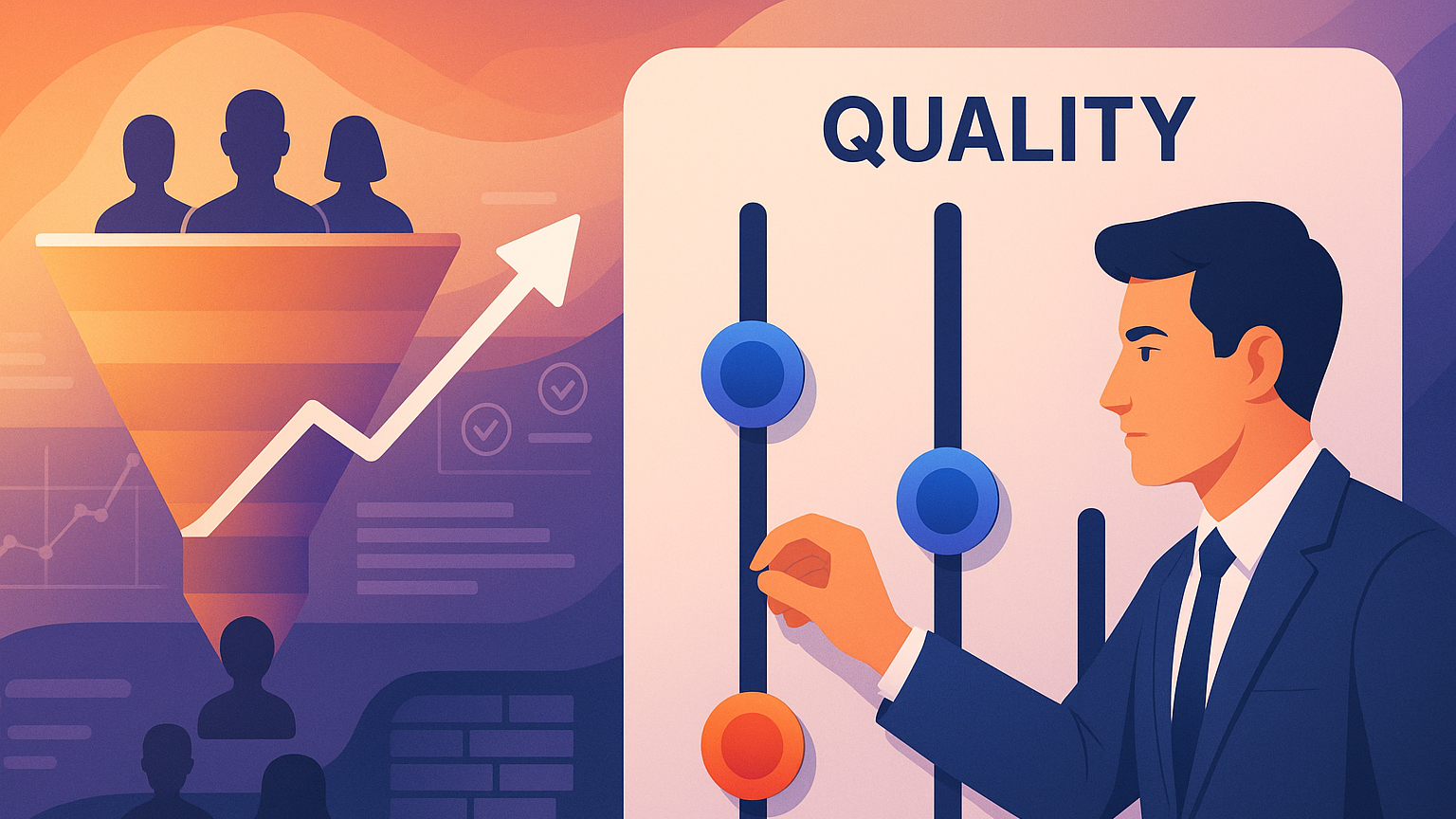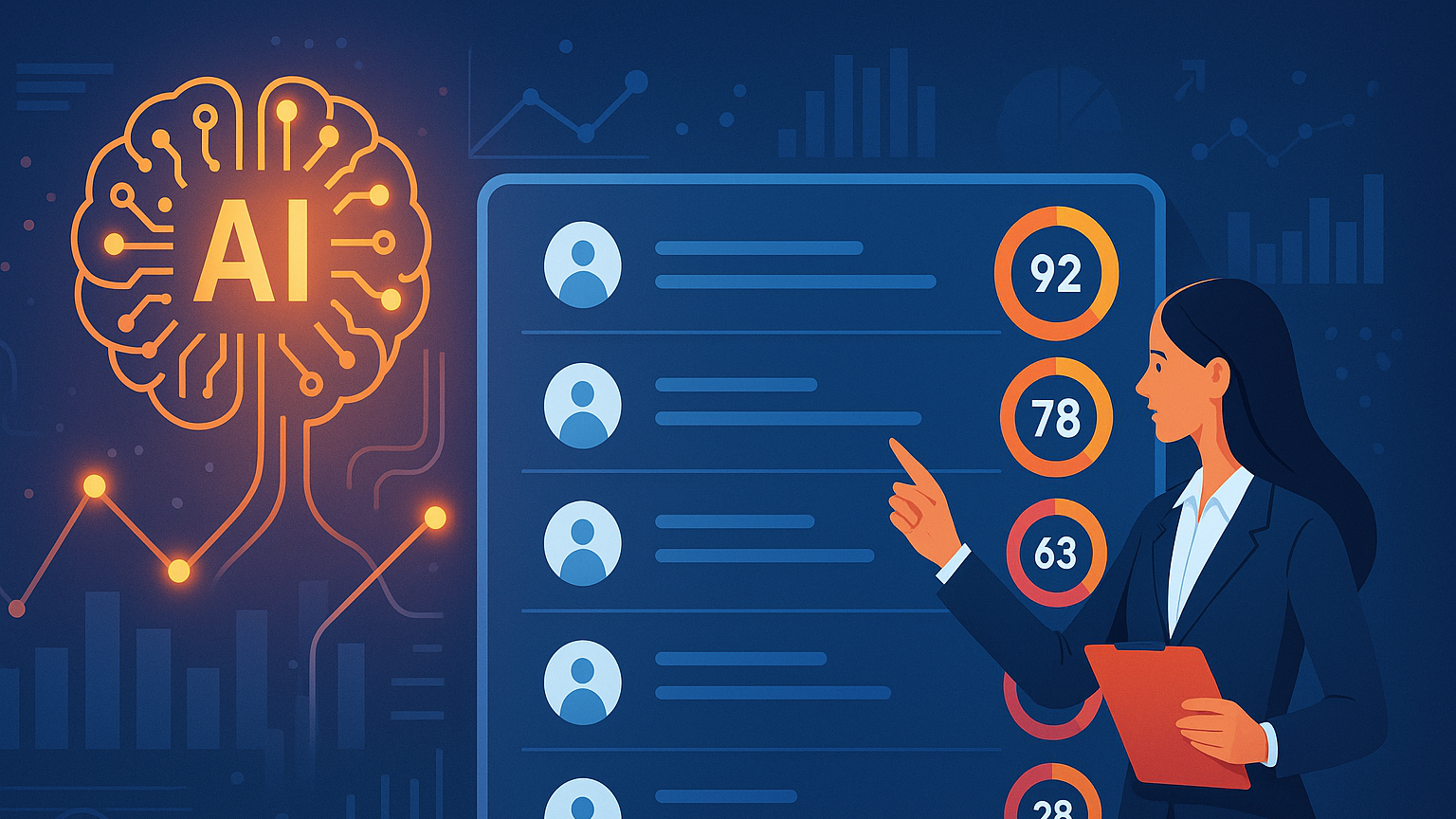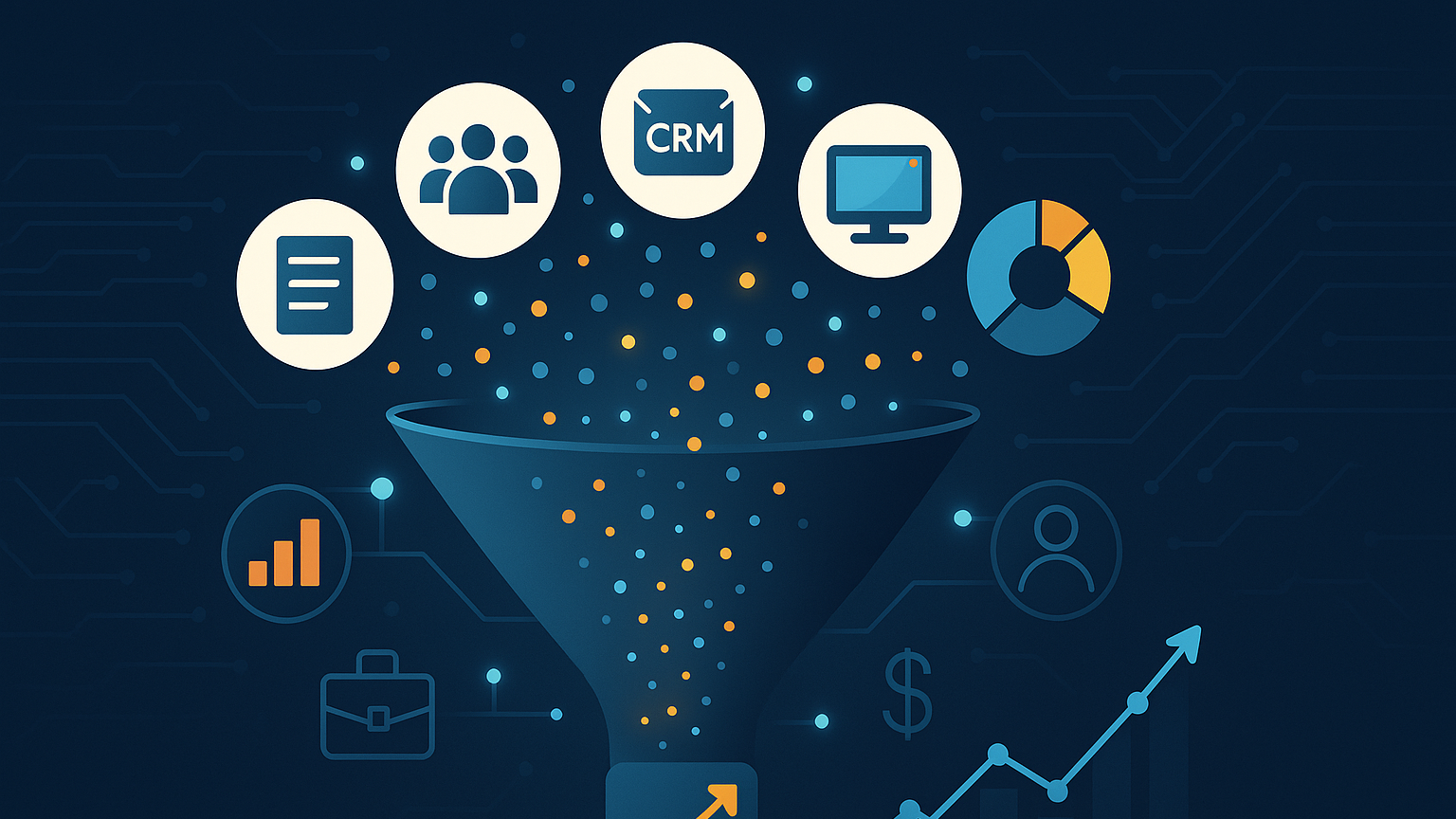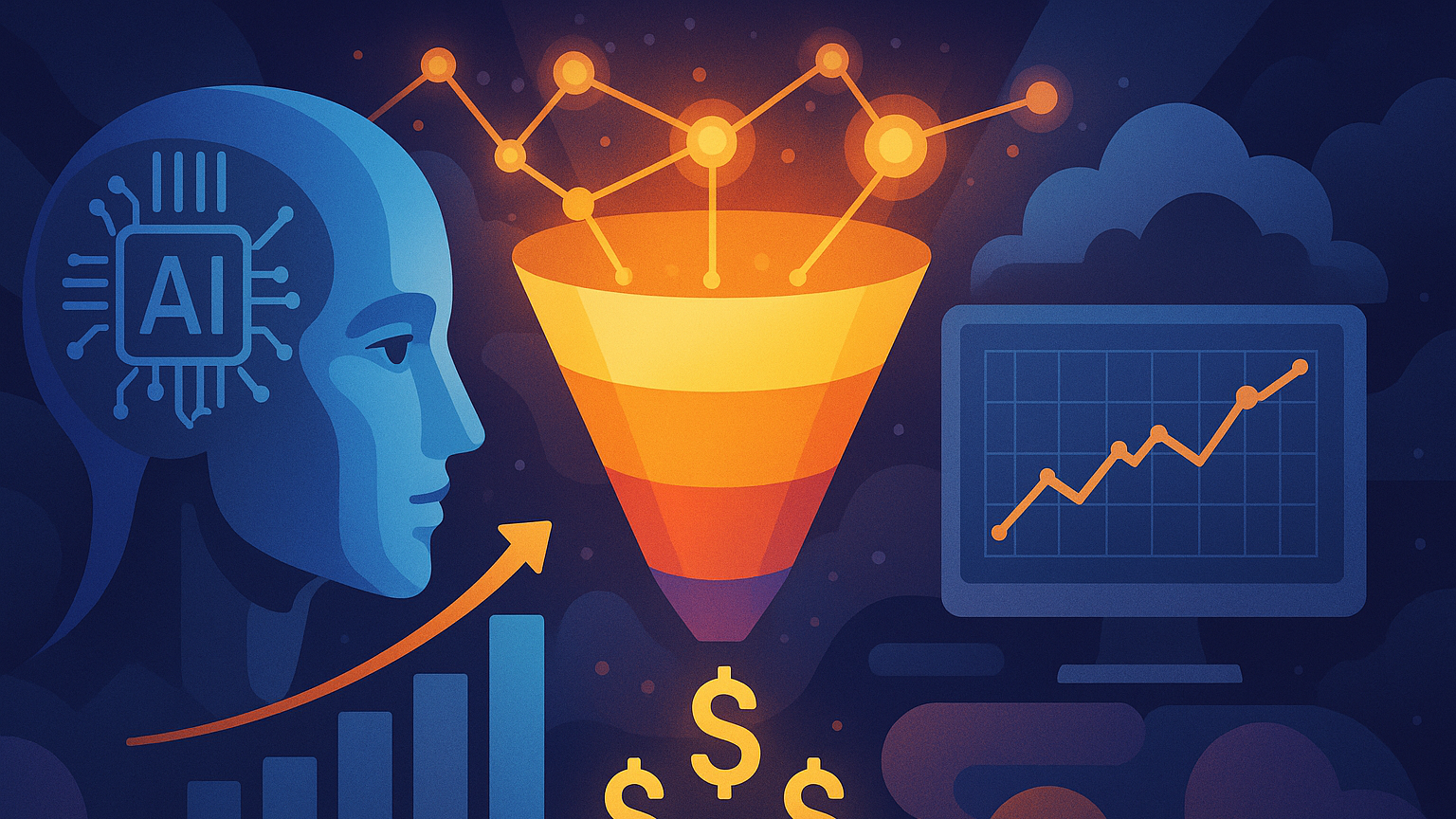
AI in Analytics to Boost Lead Quality and Conversion in Pipeline Analysis
You already know that not all leads are created equal. What you might not fully appreciate is how AI-driven analytics can change the way you identify, prioritize, and convert high-quality leads across your sales pipeline. In this article you’ll get a practical, friendly guide to how AI can sharpen your pipeline analysis, improve lead quality, and lift conversion rates — with actionable advice you can start using in marketing, sales operations, and revenue teams. You’ll also get clear steps for data, modeling, deployment and adoption, plus cautions about bias, measurement, and organizational change.

Why Lead Quality and Conversion in Pipeline Analysis Matter
Lead quality is the lever that moves conversion rates, sales efficiency, and ultimately revenue growth. When your pipeline is full of low-quality leads, sales teams waste time chasing poor fits and response times slip. When you improve lead quality, your sales cycle shortens, cost-per-acquisition drops, and customer lifetime value tends to rise because the right buyers enter the funnel. Pipeline analysis helps you understand stage-wise drop-offs, time-in-stage, and which signals predict a deal moving forward. With AI, you can transform these descriptive insights into predictive action: scoring, routing, and personalized engagement that increase conversion probability.
How Pipeline Analysis Works Today
Traditional pipeline analysis focuses on funnel metrics — lead-to-opportunity conversion, opportunity-to-close conversion, average deal size, velocity, and win rates by stage and source. You probably build dashboards showing conversion rates by campaign, region, or rep. That data is invaluable, but often reactive. It tells you what happened, not precisely what will happen next. AI augments this by turning historical patterns into forward-looking predictions, surfacing why certain leads advance or stall, and recommending concrete actions to improve outcomes. In short, AI shifts pipeline analysis from hindsight to foresight and from reports to operational decisions.
Where AI Adds the Most Value
AI can improve nearly every step of your pipeline analysis, but the biggest gains typically come from a few use cases: lead scoring and propensity models, segmentation and prioritization, intent and signal detection, and personalized next-best actions. When you combine these capabilities, you create a system where your highest-probability opportunities get timely attention, marketing spends target the right cohorts, and sales interactions are more relevant and effective. That means better conversion rates, shorter cycles, and more predictable revenue.
Lead Scoring and Propensity Models
Lead scoring is the classic application. AI-based propensity models analyze historical outcomes and multiple input features — firmographics, behavior, engagement, product usage, and third-party signals — to estimate how likely a lead is to convert. Unlike static rules, machine learning models adapt to changing patterns and can integrate a large number of weak signals to create a robust score. As a result, your team can prioritize leads based on predicted revenue impact, not guesswork, and reduce time wasted on low-probability prospects.

Segmentation and Prioritization
AI helps you discover segments that matter for conversion that you might miss with manual rules. Clustering and embedding techniques can reveal groups of leads with similar behaviors or latent needs, enabling you to assign different nurture tracks, offers, or sales motions. You’ll be able to prioritize not just by individual score but by segment-level economics: which cohorts bring higher lifetime value, faster conversions, or more cross-sell potential.
Intent and Signal Detection
Buyers leave digital footprints — content downloads, search queries, product interactions, meeting requests, and email engagement — that indicate intent. AI techniques, particularly natural language processing (NLP) and sequence modeling, help you identify intent signals in unstructured data like email text, support tickets, web sessions, or call transcripts. These signals can improve lead scores and trigger timely outreach, so you connect when a prospect is actively evaluating.
Churn, Upsell, and Winback Predictions
AI in pipeline analysis isn’t only about acquisition. You can use predictive models to identify at-risk opportunities or customers and design interventions to prevent churn or accelerate upsell. Winback models can suggest when a former opportunity might be recaptured, and churn predictions help refine pipeline forecasts by estimating likely retention. This makes your revenue forecasts more granular and actionable.
Data Foundations: What You Need
AI is only as good as the data you feed into it. To boost lead quality and conversion, you’ll want to invest in a data foundation that brings together CRM records, marketing automation events, web and product telemetry, sales activity logs, third-party enrichment, and financial outcomes. If data is fragmented, models will be biased or unreliable. Your goal is to create a single source of truth where leads and their journeys can be traced end-to-end.

Data Sources and Integration
Start by mapping the systems that hold relevant data — CRM, marketing platforms, web analytics, product usage, customer support, and enrichment providers. Integrate these sources into a unified data store with persistent identifiers so you can link behavior to outcomes. In practice, that means investing in ETL/ELT processes, identity resolution, and a consistent schema for entities like leads, accounts, and opportunities. Without this integration, your models will miss context and your predictions will be incomplete.
Feature Engineering and Enrichment
Good features separate predictive models from mediocre ones. Create features that represent temporal behavior (recency, frequency), engagement depth (pages per session, product features used), intent signals (topics in search or email), and firmographic context (industry, size, technographic stack). Enrich internal data with third-party firmographics and intent data to add missing context. Automated feature stores can help you operationalize and reuse features across models.
Labeling and Target Definition
Be deliberate about how you label outcomes for modeling. Your target might be “opportunity created within 90 days,” “deal closed-won in 6 months,” or “revenue above $X.” Different targets lead to different models and behaviors. Carefully choose time windows and outcome definitions that align with your business goals, and be aware of survivorship bias and leakage — ensure that features used for prediction would have been available at the time the score must be generated.
Models and Techniques to Consider
There are many modeling approaches suitable for pipeline analytics. Your decisions should be guided by the business problem, the volume and velocity of data you have, and the requirement for transparency and speed. In many cases, a hybrid approach works best: simple models for explainability and operational speed, plus more complex models for high-impact, high-data tasks.

Supervised Learning: Classification & Regression
Classification models predict discrete outcomes (will this lead convert?), while regression models predict continuous values (expected deal size or time-to-close). Common algorithms include logistic regression for baseline interpretability, gradient-boosted trees (like XGBoost or LightGBM) for performance, and neural networks for very large or complex datasets. You should start with interpretable baselines and move to more complex models if they materially improve business metrics.
Unsupervised Learning: Clusters & Anomaly Detection
Unsupervised techniques help uncover hidden patterns without explicit labels. Use clustering to segment leads by behavior, anomaly detection to highlight unusual pipeline events, and dimensionality reduction to explore latent features. These techniques are particularly useful when you want to surface new cohorts for targeted campaigns or understand why pipeline performance shifted.
Time-Series & Survival Analysis for Pipeline Timing
Time-in-stage and velocity matter. Survival analysis and time-to-event models estimate the probability that an opportunity will close in a given period, accounting for censoring and varying observation windows. Time-series forecasting can project pipeline volume and expected revenue per period. These approaches give you better timing predictions and help you allocate resources to stages that need acceleration.
Uplift Modeling and Causal Inference
If your goal is to know what actions actually cause improved conversion, uplift models and causal inference methods matter. Uplift models predict the incremental impact of an action (e.g., a specific email or sales outreach) on conversion probability. Running randomized experiments combined with uplift modeling helps you allocate interventions to where they truly move the needle. This is more reliable than correlational models for decision-making that affects resource allocation.
NLP for Conversation Intelligence
NLP adds rich context from unstructured sources: sales calls, emails, chat transcripts, and content interactions. Topic modeling, sentiment analysis, and intent classification can be used to enrich lead profiles and detect signals like urgency, budget, or technical requirements. Conversation intelligence models help you coach reps with targeted feedback and identify common objections or competitive mentions that influence win rates.
Measuring Success: Metrics That Matter
You need metrics that reflect both model performance and downstream business impact. Model accuracy alone isn’t sufficient; what matters is whether the AI changes behavior and leads to improved conversion or revenue. Design a balanced set of metrics that cover predictive quality, business outcomes, and operational effectiveness.
Lead Quality Metrics
Measure lead quality using precision at top k (are your top-scored leads converting?), lift charts (how much better your model is than random), and decile analysis (conversion by score decile). Track mean time-to-opportunity for high-scored leads and whether your scoring reduces time wasted on low-probability prospects. These metrics tell you whether your model is prioritizing the right leads.
Conversion and Revenue Metrics
Tie predictions to hard business outcomes: conversion rates, average deal size, win rate, and revenue per lead. Track funnel conversion improvements before and after model deployment and measure incremental revenue attributable to AI-driven actions. Consider measuring pipeline velocity and quota attainment improvements among reps using the system.
Model Performance and Business Impact
Beyond accuracy (AUC, F1), monitor calibration (do predicted probabilities match observed frequencies?), false positive/negative costs, and business lift (change in revenue or conversion). Use confusion matrix metrics where the cost asymmetry matters — for instance, missing a high-value lead is more costly than contacting an uninterested lead. Finally, maintain monitoring for data drift and model decay to ensure sustained impact.
Deploying AI into Your Sales Process
Creating a predictive model is only half the battle — the other half is getting it into the hands of sales and marketing in a way that changes behavior. Deployment must consider integration, latency, user experience, and automation patterns that respect sales workflows.
Integration with CRM and Sales Tools
Your AI predictions must live where reps work: CRM, sales engagement platforms, and inbox workflows. Embed scores and reasons in record views, feeds, and task lists. Ensure your CRM can accept webhook or API inputs for real-time scoring and that scores are stored as first-class fields for reporting and automation. Seamless integration reduces friction and increases adoption.
Real-Time Scoring and Routing
For inbound leads, real-time scoring and routing are critical. You want your highest-probability leads assigned immediately to the right rep with context and an action plan. Implement routing rules based on score, territory, and rep capacity. Real-time systems require low-latency scoring, deterministic feature computation, and robust error handling to avoid missed opportunities.
Personalization and Next-Best-Action
Use AI to recommend next-best actions — tailored outreach scripts, best channels, or product demos based on the lead’s profile and model-predicted preferences. Combining propensity scores with content recommendation and conversational insights increases the relevance of every interaction and improves conversion odds. Make sure next-best-action suggestions are explainable so reps can adjust them based on intuition and relationship knowledge.
Experimentation, Testing, and Optimization
To trust AI recommendations, you’ll want to measure their causal impact. That means designing experiments and continuously optimizing models in production. Treat model deployment like a product launch with hypotheses, experiments, and success metrics.
A/B Testing and Controlled Experiments
A/B testing is essential to validate that model-driven prioritization or treatments increase conversions. Randomize leads between control (business-as-usual) and treatment (AI-driven routing, messaging, or pricing) and measure lift on conversion, revenue, or time-to-close. Use stratified sampling to ensure comparable groups, and run experiments long enough to capture seasonality and deal cycle lengths.
Continuous Learning and Model Retraining
Customer behavior and market conditions change, so models need periodic retraining and validation. Automate retraining on fresh labeled data and monitor for data drift, label shift, and concept drift. Implement model versioning and rollback capabilities so you can safely experiment with model updates and revert if performance drops.
Explainability, Trust, and Compliance
AI-driven decisions touch revenue and relationships, so explainability and compliance are crucial. Reps should understand why a lead was scored highly, and you should be able to audit model decisions for fairness and regulatory compliance.
Interpretable Models and Transparent Signals
Even if you use complex models, provide interpretable signals: top contributing features, rule-based fallbacks, or simplified surrogate models that explain predictions. This transparency helps sales reps trust recommendations and gives them talking points to personalize outreach. Feature attributions (SHAP values or LIME) can be surfaced in the CRM to show why a lead scored as it did.
Handling Bias and Fairness
Be proactive about detecting and mitigating bias. Historical data can encode systemic biases — for example, if certain regions or company types historically received less attention and therefore lower close rates, a model may perpetuate that inequality. Audit for disparate impacts across protected attributes and consider fairness-aware training or business rules to counteract harmful patterns.
Data Privacy and Regulation
Respect privacy rules and regulations that apply to your audience and region (GDPR, CCPA, sector-specific rules). Ensure you have lawful bases for data processing, particularly when enriching data with third-party providers. Maintain data minimization principles and secure consent where necessary. Work with legal and compliance teams to keep models auditable and to define retention and deletion policies.
Organizational Change: Adoption and Training
Even the best model fails if your organization doesn’t adopt it. You’ll need champions in sales and marketing, training programs, and a feedback loop for continuous improvement. Make the tool delightful and clearly beneficial to day-to-day workflows.
You should run hands-on sessions with reps to show how AI helps them hit quota faster, and create feedback channels where they can flag errors or suggest features. Celebrate quick wins publicly and tie AI outcomes to incentive structures where appropriate. This cultural work is as important as technical excellence in achieving sustained impact.
Practical Implementation Roadmap
If you’re wondering where to start, here’s a practical roadmap you can follow. Start with small, measurable pilots, then scale systematically as you prove value and build capabilities.
- Conduct a data audit to inventory sources and assess quality.
- Define a clear business objective and target metric (e.g., increase MQL-to-opportunity conversion by X%).
- Build a baseline model with interpretable features and evaluate on historical holdout data.
- Integrate scores into CRM and run a pilot with a subset of reps or territories.
- Run controlled experiments to measure lift and iterate on the model and workflow.
- Automate retraining, monitoring, and reporting, and scale to more teams.
This phased approach reduces risk and helps you focus on outcomes rather than technology for its own sake.
Vendor vs Build: How to Decide
You’ll face a choice: buy an off-the-shelf vendor solution or build an in-house capability. Vendors can accelerate time-to-value and often include prebuilt connectors to common CRMs and engagement tools. Building gives you control, customizability, and closer alignment with proprietary signals (like product telemetry) but requires data science and engineering investment.
Choose vendors for fast pilots, standardized use cases, and when you lack internal resources. Choose build when you have unique data that offers competitive advantage or when you need highly tailored workflows. Hybrid approaches — using vendor models tied to your custom features — are common and often effective.
Common Pitfalls and How to Avoid Them
There are recurring mistakes teams make when applying AI to pipeline analytics. Being aware of these will save you time and frustration and increase the likelihood of success.
One common pitfall is optimizing for short-term model metrics rather than business impact — don’t tune for AUC without assessing revenue lift. Another is ignoring label leakage; use only features that would be available at scoring time. Over-customizing the model without considering real-world deployability and latency is another trap; simpler models that integrate smoothly are often superior. Finally, neglecting change management leads to underutilized systems — invest in adoption early.
Sector-Specific Guidance
Different industries and business models present unique challenges and opportunities for AI in pipeline analytics. Here’s concise guidance for a few common sectors.
- B2B SaaS: Leverage product usage data and trial behavior heavily. Time-to-value signals and in-app feature adoption are high-quality predictors. Use account-based scoring for enterprise deals.
- E-commerce: Focus on intent signals from web and app behavior, combine propensity with recommended offers, and prioritize real-time scoring for cart interactions.
- Financial Services: Emphasize compliance and explainability, use conservative models with strong auditing, and integrate risk signals with lead scoring.
- Healthcare & Life Sciences: Respect stringent privacy and consent rules, prioritize data provenance, and use AI to segment by clinical or institutional readiness rather than simple firmographics.
Tailor your model inputs, evaluation windows, and deployment patterns to the unique sales cycle and regulatory environment of your sector.
Estimating ROI and Building the Business Case
To secure investment, build a clear business case. Estimate the value of improved conversion by modeling how a percentage uplift in conversion at each funnel stage translates to revenue, accounting for average deal size and sales costs. Consider secondary benefits: reduced sales time per deal, improved rep productivity, and faster pipeline velocity. Compare these benefits to the cost of data integration, model development, vendor fees, and change management. Pilot projects often provide the evidence you need to expand.
Future Trends: Where AI in Pipeline Analytics Is Headed
AI in pipeline analytics is evolving quickly. Expect more fusion of behavioral and product signals, better real-time intent feeds, and wider adoption of causal methods that tell you what actions actually cause conversions. Conversational AI will increasingly automate first-touch outreach and qualify leads before human reps intervene. Multimodal models (combining text, audio, and usage data) will provide richer predictions. Finally, more automated experimentation platforms will let you continuously test and learn in-production, shortening the time from hypothesis to validated impact.
Conclusion
AI can dramatically improve lead quality and conversion when you pair predictive models with strong data foundations, careful measurement, and thoughtful change management. Start small with clearly defined objectives, choose models and workflows that integrate into existing systems, and focus on measuring real business uplift through experiments. Protect against bias, respect privacy, and make explainability part of the experience so your team trusts and uses the insights. Over time, AI will help you turn pipeline analytics from a reporting discipline into a real-time decision engine that consistently increases conversion and revenue.
